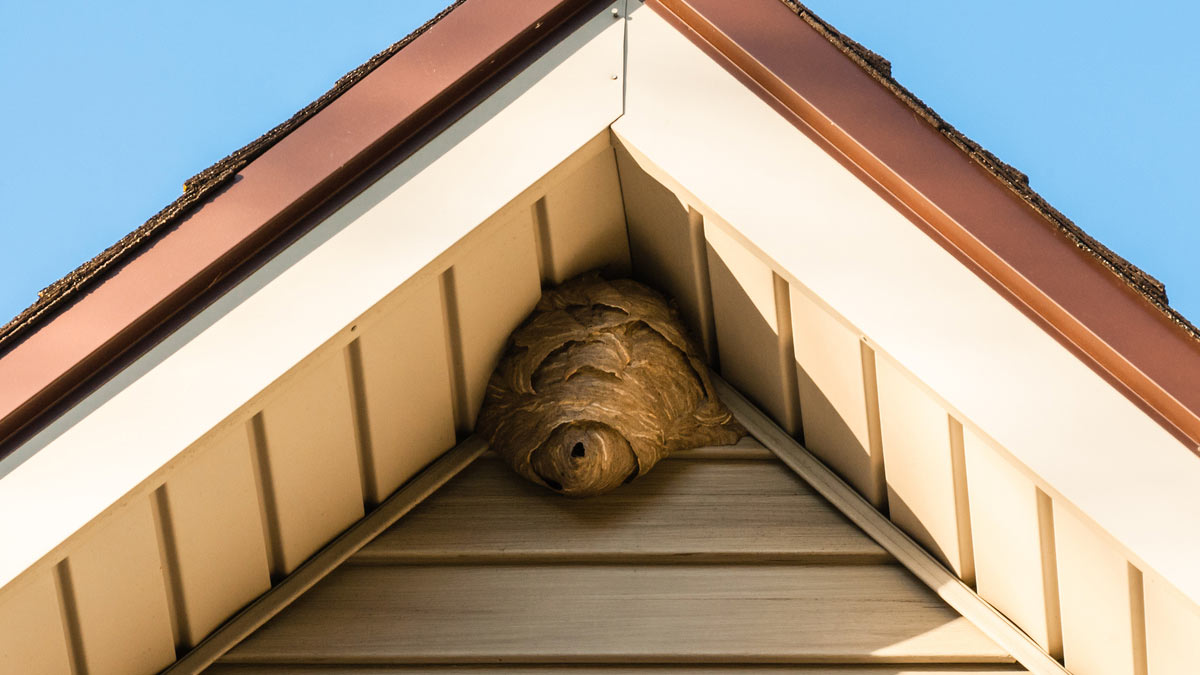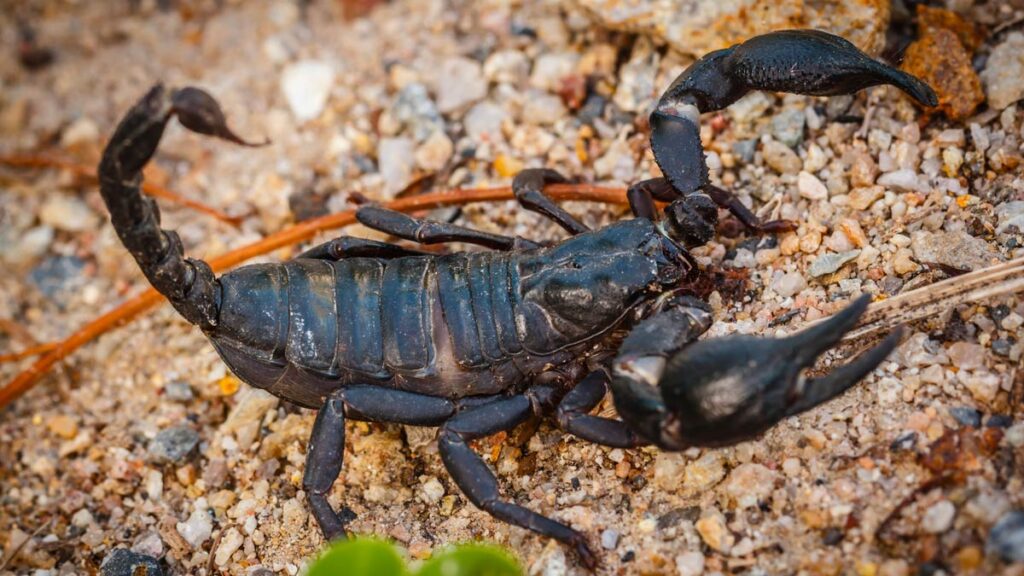
Wasp Nests in Florida Homes
Risks, Removal, and Prevention Tips
Updated on: January 2024

Florida serves as an inviting habitat for wasps with its warm climate and diverse flora. These insects are often seen present in gardens, patios, and occasionally find their way into homes, creating nests in corners, eaves, and other secluded spots. While they play an important role in our ecosystem, assisting with pollination and controlling harmful pests, wasps can pose certain risks to homeowners. Their defensive nature, coupled with a painful sting, makes it essential for residents to understand their behaviors, the potential dangers they bring, and the best practices for safely managing and removing their nests. Awareness and informed action can ensure a harmonious coexistence between Floridians and the wasp populations that share their environment.
Find What You Need
Identification and Common Types of Wasps
Florida residents often encounter several types of wasps including the Paper Wasp, Red Wasp, and Yellowjacket being among the most common. The Paper Wasp, recognized by its slender body and long legs, is often seen hovering near structures and plants. Its nests, resembling an upside-down umbrella, are made of a papery substance and have open combs. Raid’s Wasp & Hornet Killer, priced around $5, is particularly effective against these.
Red Wasps, on the other hand, are slightly larger, with a reddish-brown hue. They tend to be more aggressive, especially if their nests are threatened. Yellowjackets are easily distinguishable with their bright yellow and black bands. Unlike the paper-like nests of Paper Wasps, Yellowjackets often build their nests underground or in dark, hidden spaces, making them harder to locate.
Differentiating between a wasp and a bee, especially based on their nests, allows for appropriate action to be taken. Bees, like the honeybee or the bumblebee, are more robust and hairier, while wasps have sleeker, more streamlined bodies. Beehives are more structured, with hexagonal wax cells densely packed together. Wasps, however, use a chewed wood pulp mixture to construct their nests, giving them a papery appearance. One can purchase the ‘Bee Identification Guide’ by NaturePro, priced around $12, for more comprehensive insights into distinguishing between these insects.
Take Away
Ensuring safety while managing wasps in Florida is very important and seeking professional advice is often wise to ensure the balance of coexistence and human safety. The Florida Pest Management Association (FPMA) and the University of Florida’s Institute of Food and Agricultural Sciences (UF/IFAS) provide resources and expertise for residents facing wasp-related challenges. In brief, while wasps play an essential ecological role, Florida residents should prioritize safety and lean on local expertise when managing or removing nests.
The Risks Associated with Wasps and Their Nests
While wasps play an essential ecological role, their presence in close proximity to homes can introduce various hazards. One of the primary concerns is their sting, which, for many, results in sharp pain, swelling, and redness. However, for a subset of the population, a wasp sting can trigger anaphylaxis, a severe allergic reaction. The genetic makeup of an individual, coupled with past exposures to wasp venom, often determines the severity of allergic reactions. Symptoms of anaphylaxis include difficulty breathing, a rapid drop in blood pressure, and fainting.
Immediate first aid post-sting is essential to prevent more severe outcomes. Over-the-counter pain relievers, such as Advil or Tylenol, can alleviate pain, while antihistamines like Benadryl can help manage mild allergic reactions. For those known to have severe reactions, an EpiPen (an epinephrine auto-injector) is a lifesaver, but it’s essential to call 911 immediately after its use. As for structural damage, while wasps themselves don’t typically harm structures, certain species, like the Yellowjacket, can chew through wallboard and insulation when building their nests indoors.
Educate your children to understand the risks associated with wasps by using educational tools like the book “Bees & Wasps: Understand and Be Understood” by Dr. Insecta, for instance. This read introduces children to these creatures, emphasizing the importance of maintaining a safe distance from nests and seeking adult help if they spot one.
Locations and Behavior Patterns
Wasps exhibit distinct preferences when selecting nesting sites in Florida. Many species, like the Paper Wasp, often opt for elevated locations such as roof eaves, attic vents, or the undersides of outdoor furniture. Alternatively, Yellowjackets which are more elusive might choose subterranean locations or cavities within walls. The state’s humid climate poses challenges as while it provides an environment rich in resources, excessive moisture can deter wasps from nesting in certain areas, especially if there’s a risk of waterlogged nests.
Florida’s seasons influence wasp behavior and spring sees an increase in wasp activity as queens emerge to establish new colonies. By summer, the nests contain worker wasps, making it the peak of their presence. Fall brings a slowdown, with many colonies producing new queens that will overwinter and start the cycle new in spring. Most nests, particularly those of Paper Wasps, have a life span of about one year. By winter, colonies decline and nests become inactive, leaving behind a papery husk that will likely not be reused.
DIY Methods and Professional Removal Techniques
Addressing wasp nests in one’s home should be approached with caution and knowledge. The primary reason for the advice against DIY removal is the potential aggression of wasps when their nest is threatened. A disturbed nest can release a horde of defensive wasps, leading to multiple painful stings, and in some cases, severe allergic reactions.
DIY Methods
If addressing the problem personally, the optimal time is during the cooler hours of dusk or dawn when wasps are less active. A popular DIY method for smaller nests involves a mixture of dish soap and water, which can be sprayed on the nest. Products like ‘Wasp Freeze’ aerosol sprays, available for around $20, can effectively neutralize a nest from a safe distance. Furthermore, the ZappBug Oven 2, priced around $365, is an effective tool to eliminate wasps from household items by using controlled heat, ensuring the nest’s complete inactivity before disposal.
Professional Services
For substantial or hard-to-reach nests, professional exterminators should be utilized as they employ specialized techniques, often involving targeted pesticides or controlled burning. Be sure to wear protective equipment when attempting any removal.A full-body suit, gloves, and face netting, like the ‘VIVO Beekeeping Suit’, priced at $70, can provide a safeguard against stings. As for seemingly abandoned nests, while they’re typically safer to handle, remnants of the colony or new tenants, like other insect species, might still be present. Thus, it’s always recommended to exercise caution or seek advice from professionals, to ensure a risk-free removal.
Prevention and Eco-friendly Solutions
There are many methods that could be used to address the issue of a wasp infestation or to decrease the chances of wasps nesting in or near your home. Understanding and employing different methods can safeguard your home and family from these insects.
Natural Repellents
Several natural repellents such as peppermint oil can make areas less appealing to wasps and or repel them. A few drops in a spray bottle filled with water periodically spritzed around potential nesting sites, can act as an effective deterrent. The ‘NatureShield’ repellent, available for around $15, blends several essential oils, including peppermint, to ward off a variety of pests.
Chemicals
Post-removal, sealing entry points, regularly inspecting outdoor areas, and ensuring no food sources are accessible can prevent a recurrence. While chemical pesticides like ‘SpectracidePRO’ offer quick results, they also pose potential environmental hazards. They can contaminate water sources and harm beneficial insects, upsetting the local ecosystem. Environmentally conscious homeowners might consider diatomaceous earth, a naturally occurring sedimentary rock that can be powdered and sprinkled around nests, causing dehydration in wasps without introducing harmful chemicals.
Landscaping
Landscaping can also be a strategic defense. Plants like wormwood, eucalyptus, and citronella are not only beautiful but also function as natural wasp deterrents. Moreover, installing decoy nests, like ‘Waspinator Nest’, priced at $12, can give the illusion of an already established territory, making wasps seek alternative nesting locations. These combined eco-friendly solutions not only protect homes but also ensure that nature’s balance remains undisturbed.


